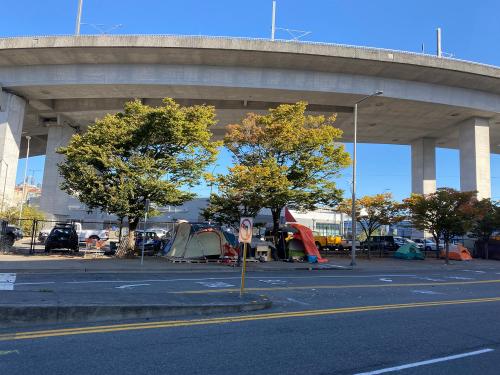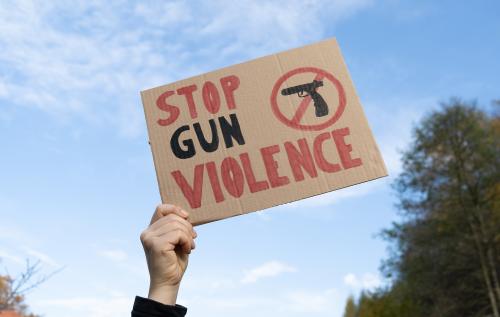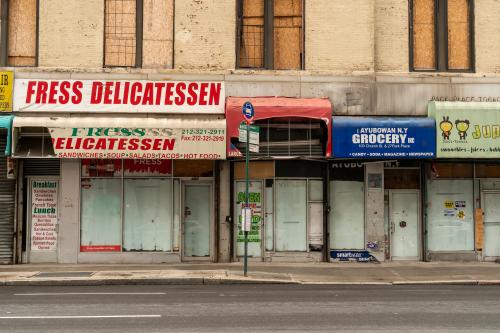WASHINGTON – A year ago, American cities were riding a heady wave of optimism. Many older cities were experiencing signs of a sustained renewal for the first time in decades. A litany of social indicators – violent crime, unemployment, poverty, homeownership – were moving in the right direction. Cities had become magnets for immigrants and hotbeds of entrepreneurial and cultural activity.
What a difference a year makes. With the onset of 2002, urban euphoria has been replaced by a more sober outlook. Cities now confront a series of major challenges that threaten the gains of the past decade. These challenges are rooted in large demographic and market trends, federal and state policies, and, after Sept. 11, pressing issues of transnational security. All of them require a new level of engagement by urban corporate, political, and civic leaders.
Here are my top New Year’s resolutions for America’s cities in 2002:
The economy. Cities face an economic downturn exacerbated by terrorism. The decline in air travel and tourism disproportionately affects cities and urban residents, given the central role of convention centers, hotels, and restaurants.
Other core urban sectors, like temp employment, have also been hit hard. Many cities must make harsh choices in the coming months as they struggle to balance their budgets in the face of declining revenues and rising costs of security.
It is doubtful that the federal or state governments will provide much help; in fact, they may make matters worse by cutting vital services and deferring critical investments in infrastructure and education. As Congress and state legislatures debate economic stimulus, homeland security, and fiscal retrenchment, cities need to protect against crippling cutbacks and argue for additional tools to fight terrorism.
State elections. Cities have a huge stake in the outcome of the 2002 elections, particularly the 36 governor races. While the national media focus primarily on the battle for Congress, the states are increasingly where the action is for cities.
The states have always played a central role on fiscal, infrastructure, and governance issues. With devolution, they are now responsible for implementing federal welfare, workforce, transportation, and housing programs. In recent years, governors such as Maryland’s Parris Glendening and Pennsylvania’s Tom Ridge have pursued “smart growth” policies to curb sprawl, preserve rural farmland and suburban open space, and promote urban reinvestment. Cities need to join forces with suburbs and rural areas to keep these issues at the forefront of state agendas.
Demographic change. In 2002, the Census Bureau will release the next batch of information from the 2000 census. This information will confirm that the United States is going through a period of dynamic demographic change.
Cities need to understand the national trends on population, aging, immigration, income, and housing, and assess what they mean politically, socially, and economically. They need to use the 2000 census to help set the federal and state agendas on issues like welfare, transportation, taxation, education, and metropolitan growth. Given the diversity of cities, they also need to use the census to set local priorities. Knowing the differences between a Phoenix and a Philadelphia is ultimately the ticket to designing urban strategies that work.
Welfare reform. In 2002, Congress is scheduled to reauthorize the welfare-reform law. During the first welfare-reform debate in 1996, cities were largely missing in action. This time around they need to engage.
In most states, welfare reform is essentially an urban policy. The top 100 cities now account for 58 percent of the nation’s welfare cases, up 10 percentage points from 1994. A disproportionate number of the nation’s hardest-to-serve participants, including those with multiple barriers to steady work, live in cities. In almost every metropolis, city-welfare recipients have difficulty just getting to suburban jobs.
Cities need to be at the welfare-reform table this year, lobbying for policies that give them the resources and flexibility necessary to get the job done.
Crime. The precipitous decline in crime, particularly violent crime, was a central factor in the urban revival of the past decade. That success story is now at risk in many cities. Homicides have increased sharply in a broad range of cities, including Chicago, Boston, and Phoenix.
Some of this increase may be a result of the rising number of prison inmates being released. Some 635,000 inmates are expected to leave prison this year compared to 170,000 in 1980. The specter of “prisoner reentry” and recidivist behavior will require all players in the criminal justice system – mayors, judges, prosecutors, police officers, social-service and drug-treatment providers – to create new models for assimilating ex-convicts back into their communities and preserving safe communities.
In short, 2002 is not a time for urban complacency. The 1990s were a period of urban recovery in part because many cities elected leaders who addressed local dysfunction head on. In the new year, city leaders, particularly the crop of new mayors in New York, Los Angeles, Detroit, and elsewhere, will be tested once again.
Read the opinion piece in The Christian Science Monitor



Commentary
Op-edNew Year Resolutions For Cities
January 8, 2002